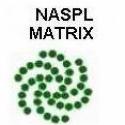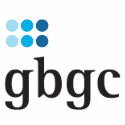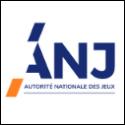Technological Advances Have Driven an Evolution in Sports Sponsorship Agreements
UNITED KINGDOM (May 1, 2023) — Technological advances and changes prompted by COVID-19 have driven an evolution in sports sponsorship agreements, from traditional advertising to a digital-heavy and more accessible sponsorship environment. But with those advances arise a series of emerging legal issues, including sponsor entitlements, new IP clearance requirements, and challenges raised by the metaverse. Morgan Lewis lawyers analyze some of the biggest trends in sports sponsorship agreements in the digital age.
Fixed Signage vs. Digital Signage
Sponsors are granted advertising rights on signage within an arena in exchange for the sponsor paying the team or arena a certain fee. In the past, this typically amounted to a fixed brick-and-mortar sign within a stadium or venue. Now, the possibilities are far wider—ads can be digital, short-lived, and targeted, presenting greater agility for both owners and sponsors.
With digital signage, it is no longer necessary to incur the cost and effort required to frequently remove and update fixed signage; as such, the digital age offers a wealth of opportunities to sell signage for specific games or locations on a targeted and far more sophisticated basis. This type of sponsorship can be sold not only game by game but also minute by minute, with the cost tailored to the type of game and potential exposure.
It also allows teams that share a stadium to create and sell their own advertising packages, and, as an added advantage, digital signage can be quickly removed and replaced in the event of a sponsor bankruptcy, breach of contract, or significant reputational risk arising.
Evolution of Media Rights
Currently, we are seeing sponsorship deals occurring across three principal mediums: Linear (TV, radio), streaming services, and social media. Sponsors must take into account all of these avenues for distribution to ensure maximum exposure and reach to target audiences. COVID-19 pushed the sports industry to become more creative with respect to modes for advertising, as fans were unable to be physically present in stadiums.
Advertisers can now use green screens that allow for digital ads to appear to viewers on television without physically appearing on the court or field. Further, there are push notifications that appear on fans’ devices, keeping them engaged at all times, as well as the ability for teams and venues to host virtual events for vendors that previously reached only those individuals present in the stadium.
These digital options allow far more participants to take part in sponsored activations, and significantly broaden the reach sponsors have on a global basis. Understanding the breadth, scope, and value of media rights and having a detailed knowledge of the different mediums for modern sports sponsorships is now an essential component of successful dealmaking in this area.
NFTs
Non-fungible tokens (NFTs) are an emerging inclusion in sports sponsorship and marketing transactions, particularly in the world of sports. NFTs allow authentication of digital assets (i.e., the ability to distinguish the “real” version of a digital asset from a “copy” of the same digital asset, which is an extremely valuable technology in the collectibles world).
While recent news articles have discussed the NFT bubble bursting because the hot moment where very simple NFTs sold for millions may be over, the technology is very real, solves a lot of problems in the sports collectibles world, and is likely here to stay in the form of digital ticket stubs, memorabilia, digital trading cards, and other collectibles.
Many sponsorship agreements include features where NFTs are provided as part of the entitlements granted for the sponsorship dollars because they are easy and cheap to create, require very little lead time, and are easily transferred to attendees at sporting events.
Metaverse
The next stage in the development of the internet—the metaverse—relies on existing, cutting-edge technology including virtual reality, AI, blockchain, NFTs, and cryptocurrency. In theory, these advances will revolutionize society, including the way people consume products and media, work, and interact with friends and family. However, reliance on such emerging technologies gives rise to a number of risks as the law struggles to keep pace.
The metaverse could pose concerns over IP ownership. (Currently, AI creations are not provided with IP protection in a clear manner.) Content licensees will also need to carefully review their license agreements to ensure that they have the right to use the licensed content in the metaverse, as many license agreements may not have considered the use of licensed content in such forums.
For example, agreements to license rights to photos, logos, or packaging entered into even five years ago likely did not contain language about digital assets. Failure to secure such rights before you create NFTs or other digital assets in the metaverse can lead to a breach of the underlying license or copyright infringement.
IP Clearance
Sports properties assert extensive trademark rights, including in League and Team names, logos, colors, mascots, uniforms, the individual design features of such uniforms, and even “blank” versions of these uniforms, as well as combinations of the foregoing. Athletes also aggressively seek to monetize their name, image, and likeness (NIL) rights, as well as other IP rights such as trademarks and catchphrases, with NCAA athletes now joining professional athletes in the endorsement arena.
Further, copyrighted photographs and videos of iconic sports figures and events are some of the most valuable licensed works in the market. Meanwhile, sports properties and athletes, as well as photographers and licensing agents such as Getty, are notoriously aggressive when enforcing their rights given the substantial revenue that can be generated through licensing. Accordingly, it is imperative that a sponsor proactively secure sufficient rights to the IP of its sports partner for all contemplated or anticipated activations under the parties’ sponsorship agreement.
Moreover, when activating under a sponsorship agreement, a sponsor should clear each item of third-party IP that is used, identifying those rights secured from the sponsored sports partner and those rights that need to be secured from another party, and then obtaining the necessary releases from all relevant parties. A sponsor’s failure to do so could expose it to the risk of a costly or embarrassing infringement claim, as well as a claim for indemnification from the sponsored sports partner under and/or the termination of the parties’ sponsorship agreement.
Article was written by: Doneld G. Shelkey, Dana S. Gross and Jesse R. Taylor
SOURCE: Morgan, Lewis & Bockius LLP
Tags: Sports Sponsorship, Morgan Lewis, Technological Advances, Agreements



























